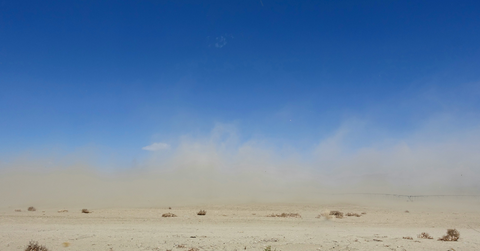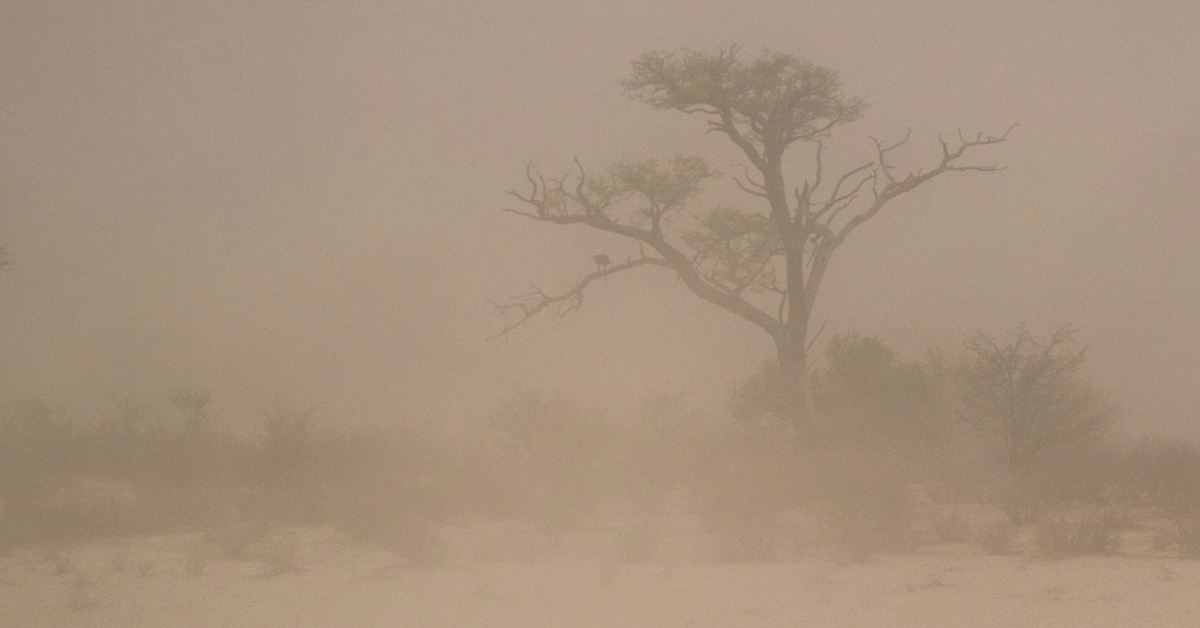What Is a Hahoob, the Massive Dust Storm That Strikes Desert Regions?
Haboobs can create walls of dust and debris that span more than 60 miles.
Published Aug. 26 2025, 2:45 p.m. ET

Thunderstorms, tornadoes, and hurricanes may all be familiar weather phenomena to people all across the country, whether you live in a region that sees this type of weather or not. That's because these storms can sometimes make national headlines when they hit, creating devastation wherever they go.
However, there's another type of weather pattern that makes headlines that you may have never heard of before, and it's called a haboob.
If you've never heard of a haboob, you may be wondering what this type of storm is and what happens when it hits places like Arizona.
While destructive forms of these storms aren't really all that common in the U.S., they can still draw a lot of attention thanks to their rarity, ominous nature, and even unusual name.
Want to learn more about the haboob and what happens when it hits U.S. deserts? Keep reading as we dive into the storm.

What is a haboob?
A haboob is a type of dust storm that happens in connection with a thunderstorm. These storms are created when the downdraft of cold air from a thunderstorm reaches the ground and stirs up the dry bits of dust or clay that line the desert floor. This then generates what is commonly referred to as a dust cloud that can form into a massive wall, according to Wikipedia.
In some instances, these walls can span up to 62 miles and bring wind speeds of 22-62 miles per hour, although one ABC News affiliate reported that an Arizona storm has stretched up to 100 miles wide.
These storms can generate quickly and without warning, and depending on the thickness of the dust, can create road hazards as vision levels drop to zero.
It's recommended that people take protective measures if they are going to be caught out in one of these storms, and that includes eye protection as well as respiratory protection. The latter is of especially big importance in places like Arizona, according to ABC News, because the winds can help spread the mold spores responsible for Valley Fever.
Why is it called a haboob?
The word haboob comes from the Arabic for blasting/drifting, according to Wikipedia. They were coined for the storms that were observed in the Sudan, where they were first named. These types of storms are common in parts of the Middle East within the Arabian Peninsula, but they aren't limited to the region and can also be observed in North Africa, Australia, and North America as well.
While the name is decidedly human, these storms aren't just limited to the Earth. They can actually happen anywhere in the universe where there is expansive areas of dry land, and they have also been observed on Mars and Titan.
What's the difference between a haboob vs. a dust storm?
While it appears that many people will use dust storm and haboob interchangeably, it seems that a haboob has the distinction of specifically being caused by the formation or collapse of a thunderstorm, whereas the phrase dust storm can be used to describe any type of wind event that stirs up large dust clouds in a certain area or region.